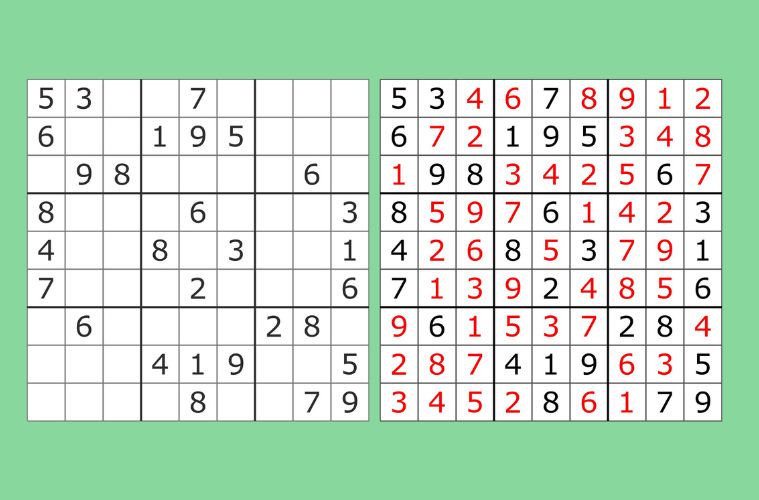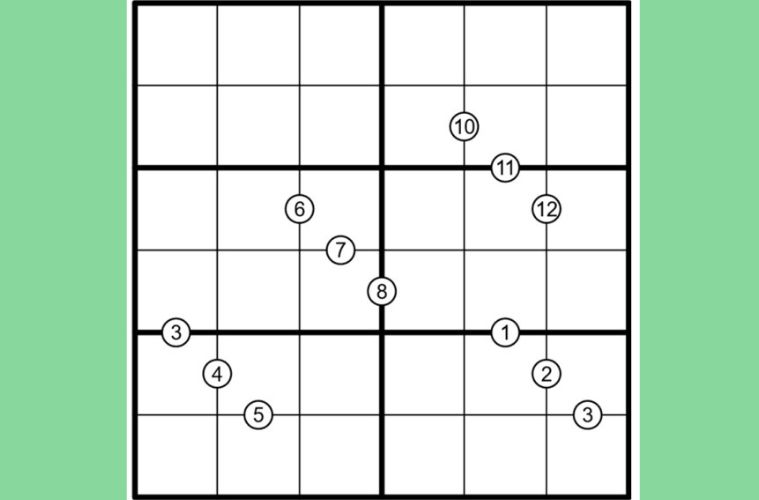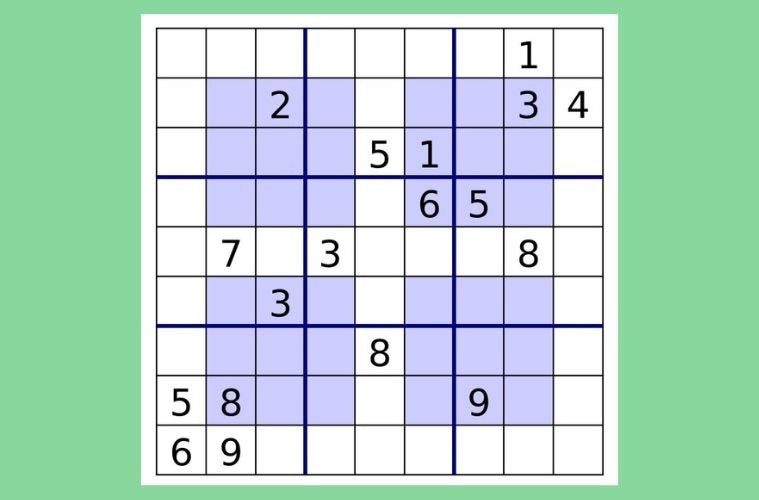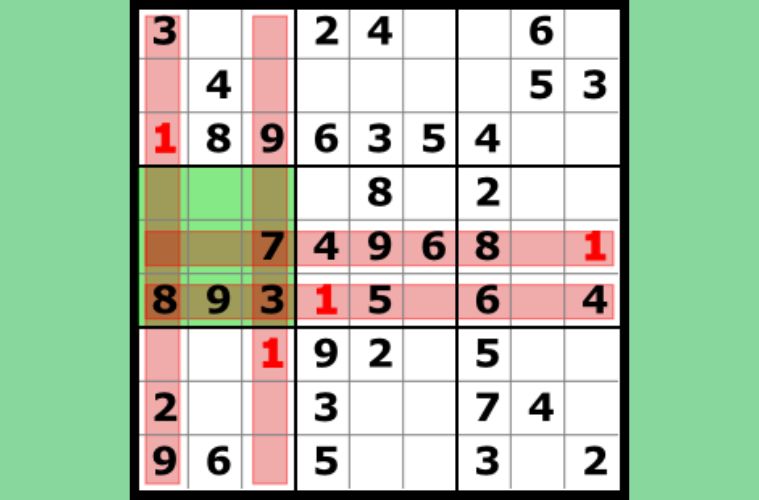- India
- International
Enjoy easy, breezy solving with our beginner’s guide to sudoku
Sudoku is a relaxing logic game that relies less on math, and more on ingenuity.
 Puzzles like sudoku are a great way to boost your brain's working memory. (Illustration: Vishnu Ram)
Puzzles like sudoku are a great way to boost your brain's working memory. (Illustration: Vishnu Ram)Our paper’s daily sudoku is now online! Play here to enjoy three difficulty levels, an auto-checker, and the option to solve together with a friend.
The brain benefits of solving puzzles like sudoku has long intrigued science. While a direct link with improved cognition is yet to be found, sudoku players often attest to the heightened concentration and problem solving skills they enjoy after getting started.
First-time solvers — especially those who struggle with math, like this author — can be intimidated by the look of the game. But you don’t need to be a STEM-minded savant to finish this puzzle. Here’s all you need to know to become a successful solver:
- The basics: how do you play sudoku?
- Types of sudoku variants
- Classic sudoku solving techniques
You can skip to the topic you like. Let’s get started:
How do you play sudoku?
Sudoku, which gained popularity in the early 2000s, is a logic game where you fill the numbers 1-9 in a partially full 9×9 grid, with no repeating digits in any row, column, or smaller 3×3 region inside. Each grid’s difficulty depends on the number and position of its pre-filled cells:

 A classic 9×9 sudoku grid (left) with its solution. Source: Tim Stellmach and (right) ‘User: Cburnett’/Wikimedia Commons.
A classic 9×9 sudoku grid (left) with its solution. Source: Tim Stellmach and (right) ‘User: Cburnett’/Wikimedia Commons.
Classic sudoku doesn’t require any calculations while playing. If all the numbers were replaced by letters or symbols, the gameplay would remain the same.
Types of sudoku variants
‘Sudoku’ is short for suuji wa dokushin ni kagiru (“the numbers must remain single”). But on this simple objective rests a great diversity of grids to play with. Most modern-day sudoku is computer-generated, but enthusiast groups like Logic Masters India also make custom grids that have additional rules a solver must follow. These are a few popular sudoku variants:
Killer Sudoku: A grid with smaller dotted ‘cages’ (segments) inside. The digits you place in the cage must add up to a small number shown in the cage’s corner.
Arithmetic Pairs Sudoku: A grid with small circled numbers given between some cells. These numbers must be the result of applying a basic math operator (+ _ * /) between the digits on each side of the circle:
 Example of a sudoku variant with arithmetic pairs. Source: Logic Masters India
Example of a sudoku variant with arithmetic pairs. Source: Logic Masters India
Irregular sudoku: Classic grid, but instead of avoiding repeated digits in the 3×3 squares, you must avoid repeats in an irregularly marked outlined region.
Windoku or Hyper Sudoku: Classic grid with 3×3 regions, but with four additional shaded 3×3 regions in the middle. The digits 1–9 must appear in the shaded regions only once. These regions resemble four windows in a frame, hence the name:
 Example of a windoku puzzle with shaded interior regions. Source: Oceanh/Wikimedia Commons
Example of a windoku puzzle with shaded interior regions. Source: Oceanh/Wikimedia Commons
Wordoku: Classic sudoku but with alphabets in place of numbers. The grid’s diagonals may form a hidden word.
Samurai Sudoku: Five 9×9 classic grids that overlap at their corners. Each grid shares one 3×3 region with another grid.
Competitive events, such as the Indian qualifiers for the World Sudoku Championships, have an interesting mix of variants that a solver must crack as fast as possible. If you’d like a deep dive into all the possibilities, this Glossary of Sudoku is a good starting point.
Classic sudoku solving techniques
You might love going old school with pen and paper, but sudoku is now popularly played online, with auto-checker tools helping build confidence. Regardless of the medium, these solving techniques should work on every classic grid you play:
- Pick a 3×3 region to fill, one by one, instead of attempting the whole 9×9 grid at once.
- Pick the most commonly appearing number across the whole grid, and try to find its place within each 3×3 grid. Alternatively, you could also pick consecutive numbers. Starting by filling all the 1s, then the 2s, and so on.
- While filling each cell in a 3×3 region, scan all the rows and columns that pass through it, and note numbers that are already pre-filled. This helps in quick elimination. When done on paper, you can draw lines marking these rows and columns. This technique is called cross-hatching:
 Example of cross-hatching while trying the find the placement of a ‘1’ in a 3×3 grid. Source: sudokugarden.de
Example of cross-hatching while trying the find the placement of a ‘1’ in a 3×3 grid. Source: sudokugarden.de
- Another technique while solving on paper is to mark cells in every 3×3 region where a certain number can go, by writing it in a small size in the corner. This helps you make quick deductions while filling every other 3×3 grid, preventing mistakes later.
- Look for individual rows and columns that are nearly full. The numbers that will go in their empty cells can be easily narrowed down, which will help every 3×3 region connected to those rows and columns.
- Find the ‘sole candidate’: Sometimes, only one number can possibly fit in a cell. This is because all the other numbers are already present in its 3×3 region or the rows/columns connecting with that cell.
For a summary of further sudoku solving strategies, try this video:
For more solving ideas, you can visit the sudoku techniques section of Kristanix, a Norwegian game company, or Cracking the Cryptic, a reputed YouTube channel dedicated to logic games.
We hope this guide has been helpful in starting your journey with sudoku. To go off the grid into other puzzles, register on indianexpress.com to enjoy our new Puzzles & Games section, and follow @iepuzzles for updates. Happy solving!
May 02: Latest News
- 01
- 02
- 03
- 04
- 05





































